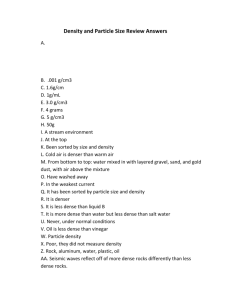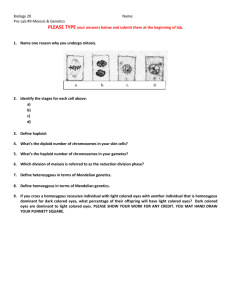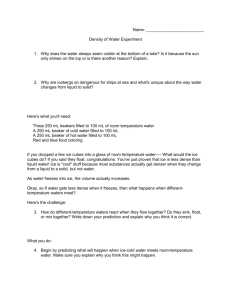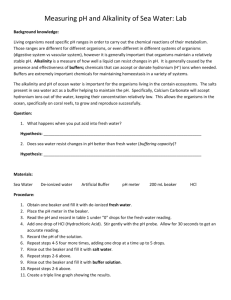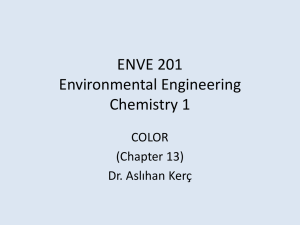THERMOHALINE CIRCULATION -
advertisement
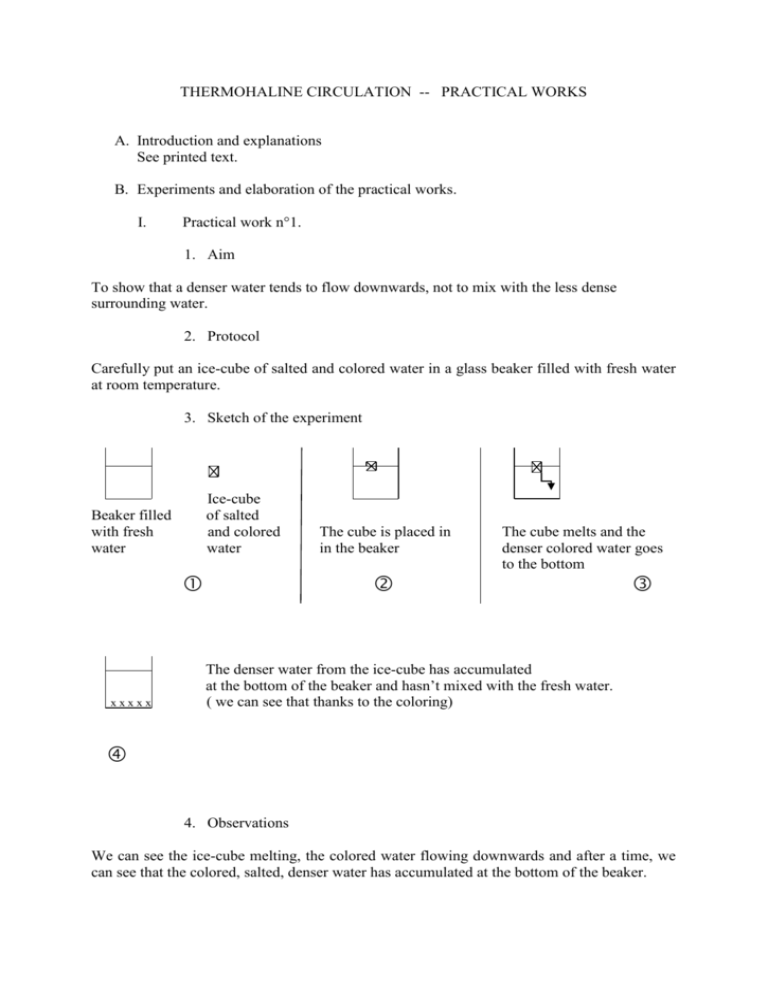
THERMOHALINE CIRCULATION -- PRACTICAL WORKS A. Introduction and explanations See printed text. B. Experiments and elaboration of the practical works. I. Practical work n°1. 1. Aim To show that a denser water tends to flow downwards, not to mix with the less dense surrounding water. 2. Protocol Carefully put an ice-cube of salted and colored water in a glass beaker filled with fresh water at room temperature. 3. Sketch of the experiment Ice-cube of salted and colored water Beaker filled with fresh water xxxxx The cube is placed in in the beaker The cube melts and the denser colored water goes to the bottom The denser water from the ice-cube has accumulated at the bottom of the beaker and hasn’t mixed with the fresh water. ( we can see that thanks to the coloring) 4. Observations We can see the ice-cube melting, the colored water flowing downwards and after a time, we can see that the colored, salted, denser water has accumulated at the bottom of the beaker. 5. Interpretation/conclusion From this experiment, we can conclude that a denser water tends to flow downwards and not to mix with the less dense surrounding water. II. Practical work n°2 1. Protocol Same experiment with an ice-cube of colored fresh water. 2. Observation The ice-cube of fresh water melts and the denser (because it’s colder) colored water from it flows downwards. 3. Conclusion Refer to practical work n°1 III. Practical work n°3 1. Aim of the practical work Show that dense water tends to flow downwards and not mix with less dense water; and also the way both types of water circulate in relation to each other in a precise case, that is the depiction of the “pump” action of the Gulf Stream and of thermohaline circulation. 2. Experiment protocol Take two glass jars with two holes. Stop the holes in order to fill jar n°1 (left) with fresh water and jar n°2 (right) with colored salted water. Both jars are filled to the same level and linked to each other by two rubber pipes connecting the holes (both pipes are parallel). 3. Sketch of the experiment. 1 2 1 A B A 2 fresh water fresh water salted colored water B salted colored water 1 2 A A B B 4. Observations. We can notice a sort of circulation : the salted water, denser than the fresh water, circulates in the bottom pipe and changes jars. The fresh water readjusts and fills the void by circulating in the top pipe and gradually taking the place of the salted water. We can notice that the salted water stays at the bottom of the jars. 5. Interpretation/conclusion First we can conclude that dense water tends to flow downwards and not to mix with less dense water. Furthermore, here we have simplified the thermohaline circulation which depends on the density of the water : - Little dense water (little salted and rather warm) → surface current - Denser water (salted and cold) → deep water circulation These two types of water never mix. C. What conclusions can we draw from these experiments? The thermohaline circulation partly depends on the temperature of the water. If the climate changes, these temperatures will be modified, so the thermohaline circulation will also be modified. The North Atlantic Drift could disappear and the direction of the currents could be modified. This phenomenon would then have an enormous impact on the submarine fauna and flora.

